 |
 |
 |
| |
HCV patients with genotype 2 or 3 who do not achieve a rapid virologic response (RVR) with peginterferon alfa-2a (40KD) (PEGASYS) and ribavirin (COPEGUS) are not easy to treat:
an analysis of non-RVR patients from the ACCELERATE study
|
| |
| |
Reported by Jules Levin
AASLD, Nov 2-6, 2007, Boston, MA
Mitchell L. Shiffman*, David R. Nelson, Greg Hooper, Diethelm Messinger and Stefan Zeuzem
*Hepatology Section, VCU Medical Center, Richmond, VA, USA
AUTHOR SUMMARY
Non-RVR patients with a baseline HCV RNA ≦400 000 IU/mL had similar rates of SVR with 16 and 24 weeks of treatment
However, these were still significantly lower than those observed in patients with an RVR (16 weeks 89%; 24 weeks 90%)
For all other baseline characteristics, non-RVR patients treated for 24 weeks had a higher SVR rate compared to patients treated for 16 weeks
(overall 44.7 vs. 26.4%)
AUTHOR CONCLUSIONS
Regardless of baseline factors, genotype 2 or 3 patients who do not achieve an RVR have low rates of SVR
Since nearly all genotype 2 or 3 patients respond to treatment, this low SVR rate is secondary to relapse
We hypothesize that a longer duration of therapy in genotype 2 or 3 patients who do not achieve an RVR will reduce relapse and lead to significantly higher rates of SVR
This hypothesis will be tested in a prospective trial (NCORE 2/3 study; N=400).
Background -
ACCELERATE study design
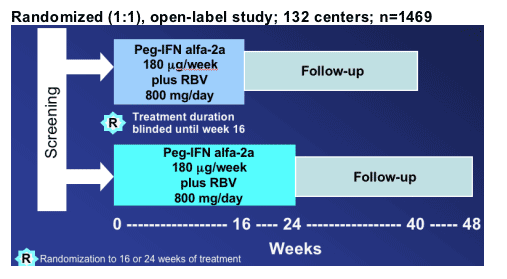
BACKGROUND
Patients infected with HCV genotypes 2 or 3 have traditionally been referred to as "easy to treat"
However, data from ACCELERATE, the largest study of abbreviated therapy ever conducted in HCV genotype 2/3 patients, have demonstrated that this is not true for all patients1
Patients who had a rapid virological response (RVR; HCV RNA <50 IU/mL at week 4) achieved high rates of sustained virological response (SVR; 85%), while those who did not only achieved SVR rates of 45%, with 24 weeks of treatment1
1. Shiffman M, et al. N Engl J Med 2007; 357: 124
Background - Virological response over time in ACCELERATE
ITT
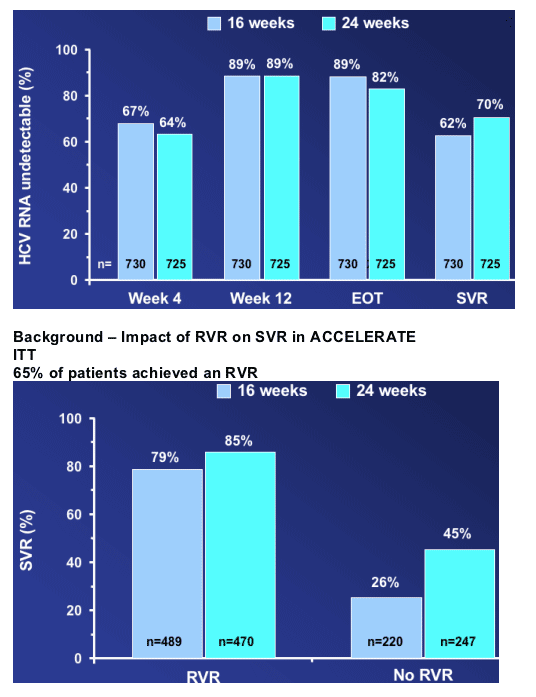
OBJECTIVE
To explore baseline factors that may identify those NON-RVR patients who are more likely to achieve an SVR with either 16 or 24 weeks of therapy
METHODS
Patients included in this analysis (ITT):
--Received at least one dose of study drug
--Did not achieve an RVR
Patients were analyzed by baseline factors and rates of SVR were calculated as a function of treatment duration
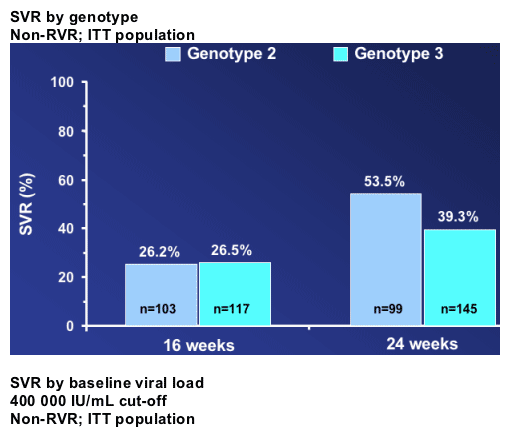
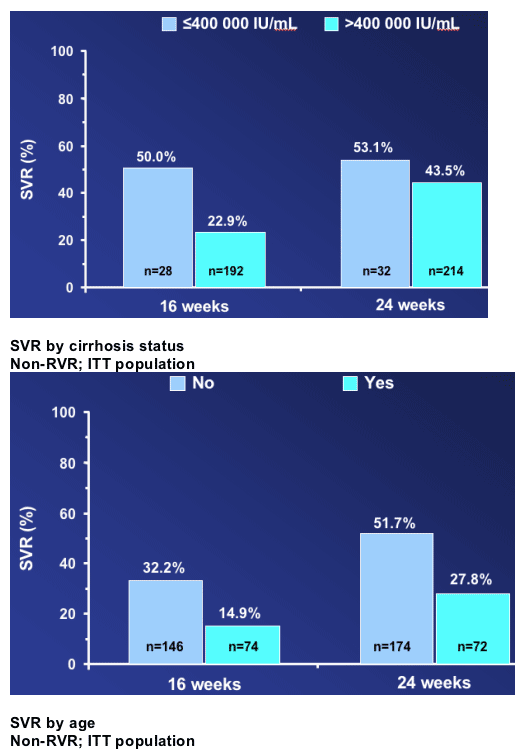
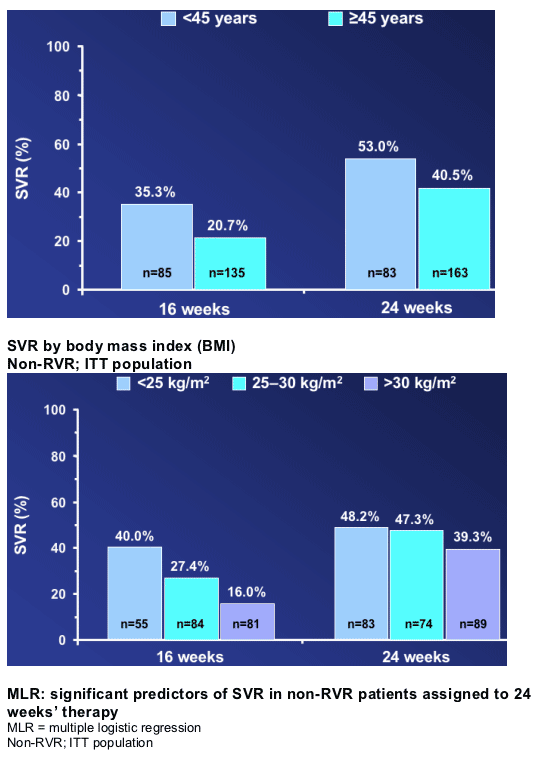

|
| |
|
 |
 |
|
|